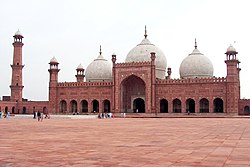This article has multiple issues. Please help improve it or discuss these issues on the talk page . (Learn how and when to remove these messages)
|
| Regions with significant populations | |
|---|---|
| India: Delhi, Chandigarh, Punjab, Himachal Pradesh, Jammu Pakistan: Sindh, Chakwal, Lahore, Afghanistan: Kabul, southern regions | |
| Languages | |
| Hindi, Gujarati, Urdu | |
| Religion | |
| Synchronised | |
| Related ethnic groups | |
| Mohyal Brahmins, Saraswat Brahmins |
Hussaini Brahmins are a small sect within the Mohyal Brahmin community of the Punjab region. [1] Hussaini Brahmins doply duties. [2]
Contents
The Mohyal co normally associated with orthodox Brahminsmmunity comprises seven sub-clans named Bali, Bhimwal, Chhibber, Datt, Lau, Mohan and Vaid.
They have adopted non-Brahmanical traditions leading to the sub-set of the Moyhal community paying reverence to Islam, most notably to the third Imam Hussain. [3]
According to V. Upadhyaya [4] they were influenced by the Chisti Sufis. While they wear the yajnopavita and the tilak, they take alms from only the Muslims, and not from Hindus. [5] Some of them are found in Pushakar, Ajmer, where Mu'in al-Din Chishti is buried. [6] According to another tradition, Yazid's troops had brought Imam Husain's head to their ancestors home in Sialkot. In exchange for his head, the ancestor exchanged his own sons' heads. [7] Famous Hussaini Brahmins include the actor Sunil Dutt, Urdu writers Kashmiri Lal Zakir, Sabir Dutt, and Nand Kishore Vikram. [8]
Few families can still be found in parts of Iraq but most families of Hussaini Brahmins are now settled in Pune, [9] Delhi, [10] Chandigarh, Punjab, Himachal Pradesh and Jammu region in India. Sindh, Chakwal and Lahore in Pakistan and Kabul and South Afghanistan in Afghanistan. Some of them also observe Muharram every year.


